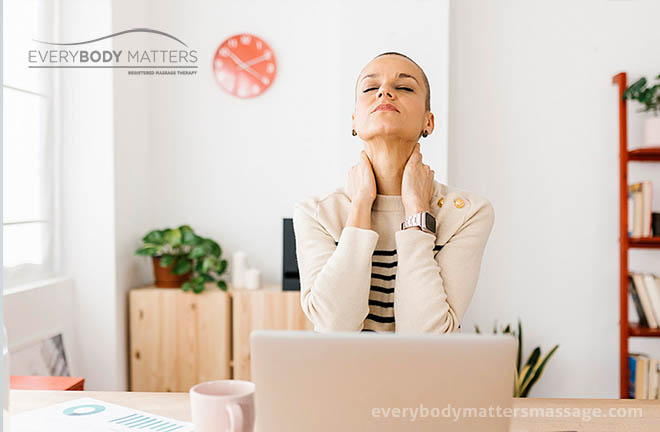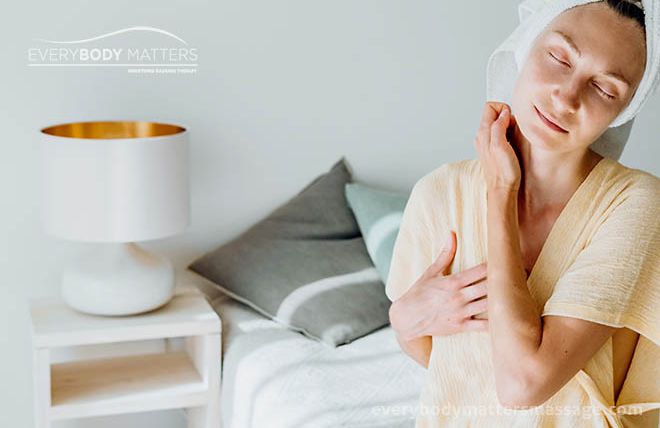The Art of Deep Tissue Massage: Relieving Chronic Pain and Tension

The Art of Relaxation through Full-body Massage
Massage therapy has been used for centuries as a powerful tool to promote relaxation, reduce stress, and alleviate pain. From ancient civilizations to modern-day spas, massages have become a popular way of treating various physical and mental conditions. One such technique is the full-body massage which offers a comprehensive approach to relaxing the entire body by targeting specific muscles and tissue groups.
Full-body massage techniques require the therapist to apply pressure on various parts of the body using different strokes, motions, and techniques that are designed to enhance physical and mental well-being. The benefits of full-body massages go beyond mere relaxation; they can also improve circulation, relieve muscle tension, boost immunity, reduce anxiety levels and improve overall sleep quality.
Covered Techniques
In this article, we will explore some practical full-body massage techniques that can be done in your own home with minimal equipment. We will cover head and neck massage techniques that are great for alleviating headaches and migraines; shoulder and back massage techniques that target areas prone to tension caused by stress; arm and hand massage techniques often overlooked in traditional full-body massages; leg and foot massage techniques for relief after long days on your feet or standing desks; finally, we will learn how to integrate all these techniques into one seamless experience.
This article aims at providing you with an insight into different full-body massage techniques that you can incorporate into your personal care routine. These methods are designed explicitly for promoting relaxation while simultaneously targeting specific muscles groups prone to tension build-up caused by everyday activities such as sitting or standing in one position for long periods of time.
Preparing for the massage
Proper preparation is the cornerstone of a successful self-care massage routine. Take the time to set up a calm and relaxing environment and choose the right massage oils or lotions if you are ok with such things. Some people are sensitive to scents so this step is optional. As you transition into the massage, clarify your intentions for the session and tune into areas of your body experiencing pain or discomfort. Always listen to your body's signals and adjust your expectations accordingly. This process promotes relaxation and maximizes the benefits of your self-care routine.
Head and Neck Self-Massage Techniques:
Many of us hold stress in our heads and necks, leading to headaches, muscle tension, and even more serious health issues. This tension originates from our mind-body connection and poor posture habits. However, with the right massage techniques, you can alleviate these stress points.
Start by massaging your scalp with circular motions using your fingertips. Gently work your way from your forehead towards your temples. Use light pressure and aim for relaxation rather than intensity.
For a neck massage, apply small, circular motions on both sides of your neck, starting at the base of your skull and working downwards. Remember, the goal is relaxation, not strain.
Shoulder and Back Self-Massage Techniques:
Tension often accumulates in the shoulders and back due to stress, poor posture, and physical exertion. Begin your shoulder massage by applying light pressure around the shoulder blades. Gradually increase the pressure while making slow circular motions with your hands.
For the upper and mid-back, use your fingers to apply deep pressure downwards and outwards from your spine. This technique is especially effective in releasing accumulated tension.
As for the lower back, lay face down and place your hands across your hips, using slow circular motions to massage each side of your spine towards the hips.
Arm and Hand Self-Massage Techniques:
Despite often being overlooked in self-massage routines, arms and hands can store a lot of tension. To massage your arms, use long strokes from shoulder to wrist, applying moderate pressure with your fingers, thumbs, or palms.
For your hands, apply gentle pressure around each finger joint, working up towards the tip. Finish the hand massage with a thumb pad stroke.
Leg and Foot Self-Massage Techniques:
Our legs and feet bear the weight of our bodies, making them prone to fatigue, joint pain, and soreness. Relieve this stress through a comprehensive self-massage, starting with the thighs and working your way down to the toes.
For thigh massage, use firm but slow movements towards the knees. On the calf muscles, use a scooping motion with your thumbs pressed into the muscles, moving upwards. Pay special attention to your ankles and feet, especially the arches and balls of your feet.
Creating an Integrated Self-Care Massage Routine:
An effective self-care massage routine is more than a collection of techniques - it's an integrated experience that flows seamlessly from head to toe.
Begin lying down comfortably on your back. Apply gentle pressure along your neck and shoulders, working your way down to your lower back. Proceed to your legs and feet, focusing on areas of tension or discomfort.
Complete the massage by gently massaging your temples, eyebrows, or forehead to address any tension headaches. To finish, place both hands on either side of your head and press gently for several seconds before slowly releasing.
Conclusion:
Self-care massage is an invaluable tool for managing stress and promoting relaxation. Regular practice, good communication with your body, and a range of techniques to address all areas of tension from head to toe are key to an effective self-massage routine. With consistency, you can create a tailored routine that leaves you feeling relaxed and rejuvenated, resulting in improved physical and mental wellbeing. If you are still looking for a Registered Massage Therapist, consider a professional in your local area.
Do you live in the GTA?
Ready to book your massage?
It's quick and easy, just click the button below and follow the instructions. You will receive confirmation and all the patient intake forms via email. Kindly read, complete and sign intake and consent forms, including cancellation policy. I believe everyone's time is valuable, and as a courtesy to everyone, we thank you for being on time. Late arrivals can only be extended to the time remaining in the scheduled session. If you cancel with less than 24 hours notice, or miss your appointment, you will be charged for the entire amount of your scheduled treatment. Insurance does not reimburse claims for late cancellations or missed appointments.
If you don't see the time you are looking for, please add yourself to the wait list.
If an appointment becomes available, you will be given priority.





